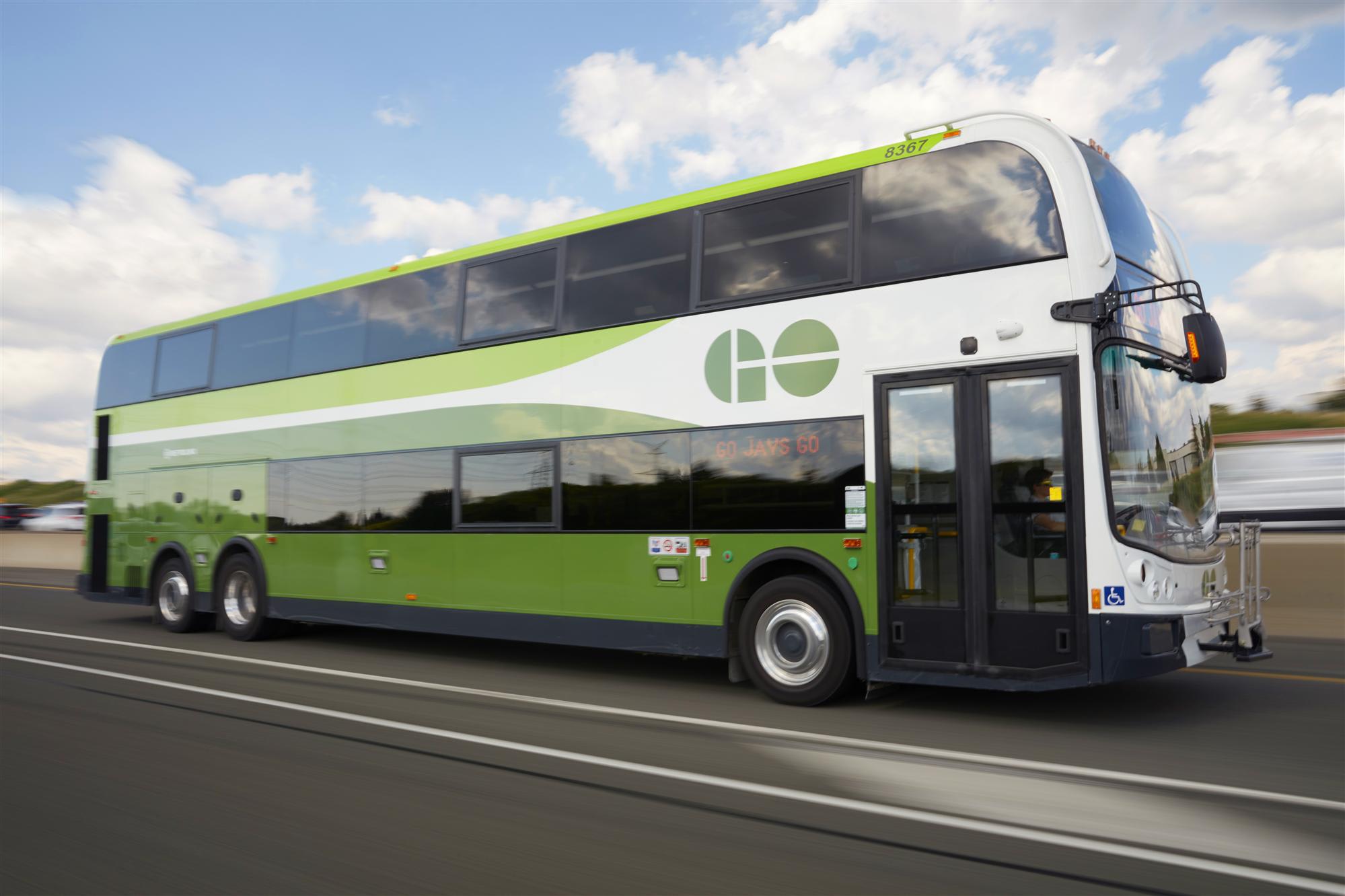GO Bus driver recruitment continues - get the latest info
Metrolinx News talks to Metrolinx’s VP of bus services to talk about the future of GO Bus services
May 11, 2022
Metrolinx is growing the GO Bus division, and that means hiring more drivers and mechanics.
Service is being added to many GO Bus routes this year, as transit continues to recover from the pandemic.
To make the expansion of the bus program possible, Metrolinx has already started hiring and training more bus drivers and will continue to grow the team going forward.
In fact, last month Metrolinx welcomed a new class of 11 bus driver trainees, with more classes planned to start every two months this year. That means about 75 new full-time drivers will join the team in 2022.
The transit agency also just welcomed its first all-female bus driver class earlier this year.
And it’s not just drivers
The GO Bus team is also focusing on bus maintenance.
The number of buses waiting for maintenance is down almost 30 per cent from earlier in the pandemic. External vendors have been used to help catch up on those repairs, but once that work is done, the work will be brought back in-house.
Clearing that backlog will mean more maintenance work for GO Bus technicians to inspect and repair. It will also mean hiring more people.
A GO bus driver on the job – taken prior to COVID-19 masking rules. (Metrolinx photo)
Meet Metrolinx’s Eve Wiggins
Eve Wiggins is the vice president of bus services and interim vice president of rail operations at Metrolinx. She’s been with the company since April 2019. Metrolinx News spoke with her earlier this month about the bright future at GO Bus.
Q. What does the future of GO Bus look like?
A. It’s exciting because the future for GO bus is growth. We are working to ensure GO Bus is able to connect customers today and in the future. That means creating and providing bus services that move people between home and work, school and entertainment.
Q. You talk about growth; does that mean more GO Bus service?
A. Our plan is to increase frequency on routes where we know customers are already travelling and decrease frequency on those routes that customers are not using. And overall, that will mean more buses on the road and the need for more full-time staff than today.
Q. What effect has the pandemic had on the bus division?
A. We reduced our GO Bus service during the COVID-19 pandemic due to low ridership, but also to protect our staff. We were able to still provide a lifeline service to those customers still travelling particularly for essential workers. That allowed us to slow down work, distance employees and still deliver service to customers.
We have dramatically ramped up work on the fleet side to get our buses ready, are hiring many new drivers right now all because we are planning for growth, and we are looking forward to serving new stops this summer. For September increased frequency, we are planning to announce the increased service plans later this summer.
Q. What makes GO Bus so unique compared to GO Train, for example?
A. Bus service is so flexible, compared to trains. We can put a bus between any two points in our service area – which means for our planning and customer insight teams, it’s about finding the best areas to service. We are doing research right now to find out what those new routes and new destinations should be and I really encourage our bus drivers and any member of the bus team to provide their insights and thoughts based on what they’re hearing from customers as well as what we think the customers and potential customers in our service area needs
The pandemic has changed everything for us, and so in the future, we will pilot a number of new options for bus customers to ensure we get the routes and stops just right and be dynamic to adapt to the changing needs of our customers and the region.
by Scott Money Metrolinx editorial content manager
